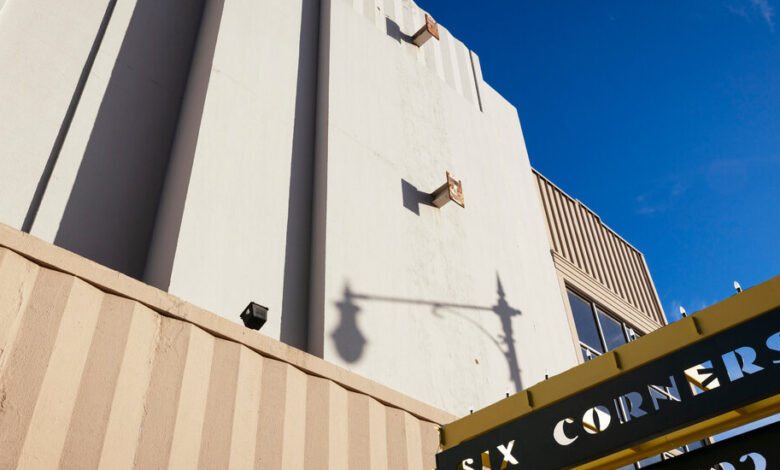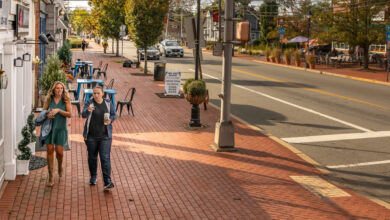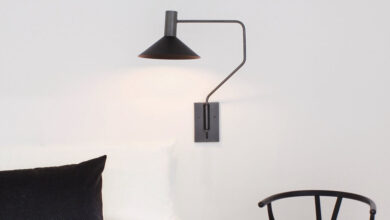Sears, Struggling to Sell Goods, Markets a Valuable Asset: Real Estate

[ad_1]
Shoppers may no longer come in droves for wrenches, watches or washing machines. But Sears, the once-ubiquitous department store that has been battered by the growth of e-commerce, may have one last thing of value to market: its own buildings.
Starting about a decade ago — and accelerating over the past few months as its owner embarked on the equivalent of a clearance sale — investors have been betting on new uses for vacant Sears stores, from Santa Monica, Calif., to southern New Jersey.
Many of the sites, often older, windowless hulks connected to shopping malls, are not straying far from their original mission: They’re being overhauled for new retailers.
But some addresses, in line with a trend of repurposing dusty commercial properties, are being given fresh and sometimes unexpected new functions. At more than a dozen sites across the county, developers are installing high-end apartments, cutting-edge classrooms and even labs where classified weapons systems are conceived.
“Sears seemed to have thrown in the towel a long time ago and is now figuring out how to monetize its properties,” said Joseph F. Coradino, the chief executive of PREIT, a Philadelphia-based shopping center owner that has redeveloped about a half-dozen Sears stores. Most recently, a health care facility announced it was taking over a shell at his Moorestown Mall in New Jersey.
To be sure, Sears is not the only chain grappling with empty aisles. Several major department stores have filed for bankruptcy protection during the pandemic, including Neiman Marcus, JCPenney and Lord & Taylor, though as with Sears, many of those retailers were struggling and closing locations well before the coronavirus crisis.
For Sears, the segue to new uses is perhaps most pronounced in its hometown, Chicago, where for decades the tallest building was Sears Tower. But no more. Sears moved out long ago, and since 2009 the 1,450-foot black-toned skyscraper has been called Willis Tower, for a British insurance company.
In Chicago, several stores have recently completed or are about to embark on makeovers, including one of Sears’s oldest properties, at East 79th Street and South Kenwood Avenue, which opened in 1928 and sold its last sewing machines in 2013.
After all traces of Sears were scrubbed away, the buff brick, nearly blocklong structure reopened last year as a self-storage facility operated by ExtraSpace Storage.
“I remember the cosmetics counter right inside the front door,” said Zeb McLaurin, recalling trips he made there with his family in the early 1980s. Today, Mr. McLaurin, the president of McLaurin Development Partners, is a co-owner of the 140,000-square-foot building, which he bought in 2018 for $900,000. The seller was Seritage Growth Properties, a real estate investment trust and an offshoot of ESL Investments, which has owned Sears since 2005 and controls Kmart as well. Sears filed for bankruptcy in 2018; its assets were snapped up a year later by Transformco, another ESL-controlled entity. Only a handful of Sears stores remain open.
With the opening of that Chicago store nearly 100 years ago, Sears began a nationwide push to add a brick-and-mortar component to a thriving mail-order business. Attention was paid to make its stores look similar to one another but also stand out.
Indeed, a tall central campanile-style tower with arched windows at the East 79th store resembles one in the North Lawndale neighborhood that once lorded over the company’s factory and catalog-printing plant. That spire, now called Nichols Tower, got a new lease on life as a community center and hub of nonprofit groups focused on housing and education.
For Mr. McLaurin, a demolition would not have been cost-effective. His site, on the South Side of Chicago, isn’t suited for an expensive new development, at least for now, he said.
But others have retained stores for the architecture because, in part, they often find it compelling, like in the Portage Park neighborhood of Chicago, where a once-bustling shopping district is a shell of its old self.
Novak Development Company, which bought the two-block site from Seritage last year for $11.5 million, is planning to preserve the Art Deco-style facade of a 1938 Sears while adding 206 apartments and 50,000 square feet of retail. The City Council gave the project its blessing this fall; construction is expected next summer.
In 2020, Novak bought another Sears site in Chicago from Seritage, a mix of beige-brick buildings and parking lots across a three-block West Side site that cost $2.4 million. Novak will build 150 apartments and retail space, although the site’s Sears store has been demolished.
Since the pandemic started, Seritage’s stock price has plunged, while its longtime chief executive has left. By September, its portfolio of 266 Sears and Kmart properties, which the company bought for $2.7 billion in 2015, had been whittled to 171, according to a company spokesman. Of those properties, 130 were Sears stores.
Even with a trimmer portfolio, Seritage has continued to plow ahead with its own Sears redevelopments, filings show, including a residential project in West Covina, Calif.
The company is involved in office conversions, too, including Mark 302, a 50,000-square-foot project in Santa Monica, Calif., for which Seritage has teamed up with Invesco, an investment firm. The nearly complete remodeling offers a light-filled atrium and a ground-floor market but has also preserved much of the original 1947 structure, a designated local landmark. The former occupant’s name remains on some facades.
“These stores were built in fantastic locations, were easily accessible and have good parking,” said Jeff Pion, a vice chairman of CBRE who is marketing potential office space inside a closed Bloomingdale’s across the street. “It’s probably been slower to lease up than Seritage wants, but you can say that about office leasing in general in the last 21 months.”
A fundamental challenge seems to be taking buildings that shunned natural light and adapting them for modern tastes, which was a challenge at a cast-concrete 1939 Sears in Houston. To brighten the space, which is owned by Rice University, designers removed the roof of the three-story building and added two extra window-lined floors. The escalators were also eliminated in the $100 million renovation, and replaced by classrooms and a 250-seat forum.
“This was not a precious restoration in any way,” said Anneli Rice, an architect with the firm Shop. “We used what was useful and stripped away the rest.”
The Ion, as the Sears is now called, partially opened last spring and counts Microsoft and Chevron among its office tenants. A craft-beer bar will open next year.
Insufficient power and plumbing is a challenge at the former Sears store at Moorestown Mall as it is converted to an outpatient medical clinic for Cooper University Health Care network. In spring 2020, Cooper bought Transformco’s stake in the store for $9 million.
The 23,000-square-foot, 1963 structure originally had four bathrooms. But because it will now house medical offices, it will need about 50, said Mr. Coradino, the mall’s owner, who has also installed four new retailers in a vacant Macy’s and is mulling a proposal to repurpose an empty Lord & Taylor. Plans are also afoot to build a hotel and 375 apartments on parking lots there.
For PREIT, the upside of adding a health care clinic in the mall is the addition of new shoppers. Relatives of patients can now have something to do, the thinking goes, while they wait.
A similar calculation is playing out in Lawton, Okla. A former Sears at the city-owned Central Plaza Mall near the Fort Sill Army base is being retooled as a hub for the production of weapons and navigation systems.
During the day, defense contractors will toil away on top-secret technology in rooms that were once cavernous, but will be carved up into smaller rooms, with more guardable doors, in the interest of security, said James Taylor, the director of the project, the FISTA Innovation Park. A shuttered Dillard’s in the mall is getting a similar reinvention.
But when it comes time for lunch, the defense workers are expected to head out to the food courts, and maybe shop along the way, which should benefit the mall’s retailers, Mr. Taylor said. “We’ve created a collaborative ecosystem,” he added. “And anyway, no one else was standing in line to occupy these stores.”
[ad_2]
Source link






